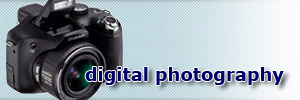
| BUY |
|
| ADVICE | ||||||||||||
|
||||||||||||
| OTHER SITES |
|
Essentials of Photography
A condensed course in the fundamentals of photography.
![]() Exposure Value: continued from previous
page
Exposure Value: continued from previous
page
 Now we come back to the exposure. Any given
lighting circumstance requires a specific amount of light to fall on the
image sensor to create the photograph. A large aperture allows more light,
so the shutter speed is increased to reduce the amount of time which the
light is admitted. Similarly a fast shutter speed allows light in for
a very short period of time, so the aperture is increased to increase
the light.
Now we come back to the exposure. Any given
lighting circumstance requires a specific amount of light to fall on the
image sensor to create the photograph. A large aperture allows more light,
so the shutter speed is increased to reduce the amount of time which the
light is admitted. Similarly a fast shutter speed allows light in for
a very short period of time, so the aperture is increased to increase
the light.
It must also be taken into account that a lens can be expected to perform best in the mid-to high range of its aperture.
So, let’s take a specific example. Any of these pairs of settings gives the same exposure value, and might expose a photograph perfectly:
| f 8 | f 5.6 | f 4 | f2.8 | f 2 |
| at | at | at | at | at |
| 1/30th | 1/60th | 1/125th | 1/250th | 1/500th |
Staying with our examples above, we would choose:
![]() f 2 at 1/500th for a the portrait with
a ‘dissolved’ background, or for an action shot.
f 2 at 1/500th for a the portrait with
a ‘dissolved’ background, or for an action shot.
![]() f
5.6 at 1/125th would be preferred to achieve the highest quality
of photograph then, or
f
5.6 at 1/125th would be preferred to achieve the highest quality
of photograph then, or
![]() f
8 at 1/30th if an efficient camera support such as a tripod is
used.
f
8 at 1/30th if an efficient camera support such as a tripod is
used.
![]() Film
Speed
Film
Speed
The final factor to have a bearing on this is film speed, defined by
and ISO setting. Available speeds generally range from around ISO 100
at the slow end, to ISO 800 or more. Now a digital camera, of course,
does not have a film, but electronics provide a real element of choice
by simulating film speeds. The digital photographer has this option at
the push of a button, but the chemical photographer has to change the
film or use multiple cameras with different films loaded in each.
The effect of differing film speeds is this: a slow speed will react slower
to the light intake and require a longer exposure, or larger aperture.
The benefits are in a higher quality of photograph. A fast film speed
reacts, as should be expected, more quickly and is therefore useful in
low-light situations. The disadvantages are graininess in a chemical photograph,
and in a digital photgraph a quality known as ‘noise’ which
is irregularities in the colour.
| This is a quick summary of the essentials of photography but a thorough understanding of these principles will take you a long way. This point illustrates another major benefit of digital photography, and that is the capacity to experiment. If your pictures are viewed on a computer monitor then there is absolutely no additional cost no matter how many pictures you take and how many variations you play about with. | If there is one quality which makes digital excel over chemical photography it is the element of choice. You, the photographer, can control the whole of the process, or any part of it, at any stage. |